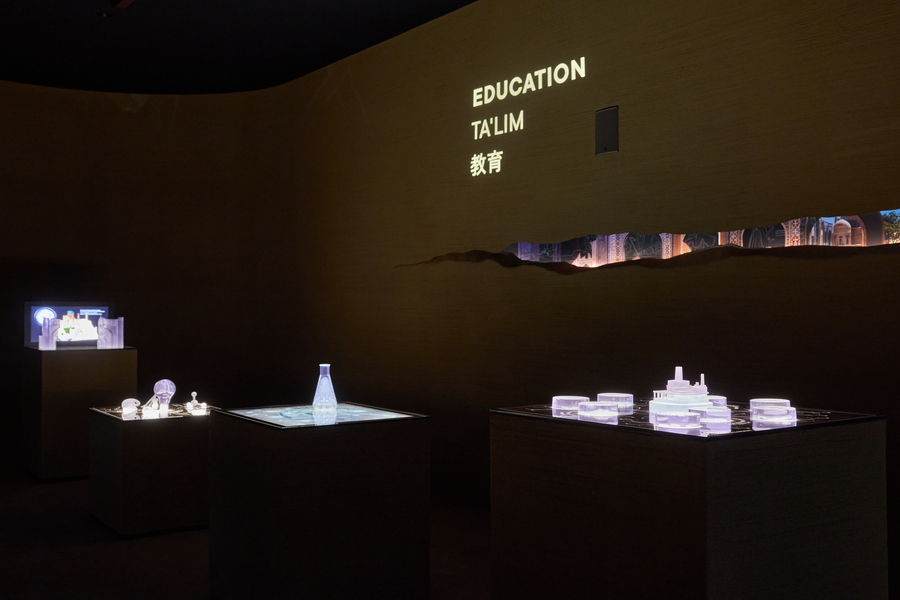
"Garden of Knowledge: Young Branches of the Ancient Tree"
Architectural monument of knowledge
Uzbekistan has long been a place of knowledge at the crossroads of the Great Silk Road civilization. The "Garden of Knowledge" pavilion continues this tradition in the 21st century, harmonizing it with the spirit of stability and innovation. "The pavilion serves as a bridge connecting the past and the future, contributing to a deeper understanding of Uzbekistan's present by the world," said Saida Mirziyoyeva, Assistant to the President of the Republic of Uzbekistan. The example of the Uzbek society "Garden of Knowledge" is a symbolic manifestation of the diversity of cultures, languages, historical events, and ideas. Along with various modern technologies and innovations, it will also incorporate handicrafts and demonstrations of national art, just like the rising Uzbekistan.
Demographic power pillar
The largest natural resources of Uzbekistan's economy are not only gold and gas, but also the great dreams of its youth. Today, over 60% of the population of Uzbekistan is younger than 30 years old. This figure is not just statistics, but the biggest capital that determines the future and is the focus of the community's attention. If the necessary investments and reforms are implemented during this demographic "youth" period, qualified and creative personnel will emerge for tomorrow. In this regard, Uzbekistan is implementing a number of reforms aimed at education and investment, and is opening up to the world. The "Garden of Knowledge" pavilion is also a sign of these changes.
The necessity of educational reform
Uzbekistan plans to double its GDP to $200 billion by 2030. To achieve this goal, it is necessary to modernize industry, expand exports, and increase labor productivity by at least 50%. In addition, a number of decrees and orders are coming into force to train qualified personnel for the labor market. For example, the PDP ecosystem, which specializes in IT, plans to transform 100,000 young professionals into specialists with a salary of $2,000 by 2030. A decree of the President of the Republic of Uzbekistan was also adopted on this matter. Moreover, important decisions have been developed to ensure inclusivity and gender balance in education. In 2022, a number of programs were launched under the state order to train women in IT. According to the project, 100 thousand girls have received full grants for training in Python and blockchain. Such state programs and initiatives are an important factor in training qualified specialists for the labor market within a few years.
Expectations: 2030
Step-by-step steps are being taken to create 1.2 million new jobs for young people by 2030. Currently, projects are being implemented aimed at creating technology parks and industrial zones in the regions, creating dual education clusters and startup incubators. International investments are being attracted. To increase the share of STEM students from 35% to 60%, STEAM laboratories and international olympiad centers are being opened in schools, and necessary measures are being taken to integrate students into the startup ecosystem. The goal is to increase the coverage of girls in higher education from 42% to 55%. These include significantly increasing the share of women in the labor market, special grants for women, and stimulating remote work during maternity leave.
Future Knowledge Laboratory
The most important task of Uzbekistan on the threshold of 2030 is the full realization of the potential of the younger generation. Educational reform serves as the main management mechanism in this process. Every innovative approach, from digital laboratories to a 3D model of the Bibi-Khanym Mosque, gives young people a modern weapon and an ancient source of inspiration. The necessary and decisive steps taken today will transform Uzbekistan tomorrow into a center of knowledge not only regional, but also global. The reason is that the deep and solid roots of science, concentrated at the crossroads of the civilization of the Great Silk Road, are a reserve point of support for the garden of the future.


